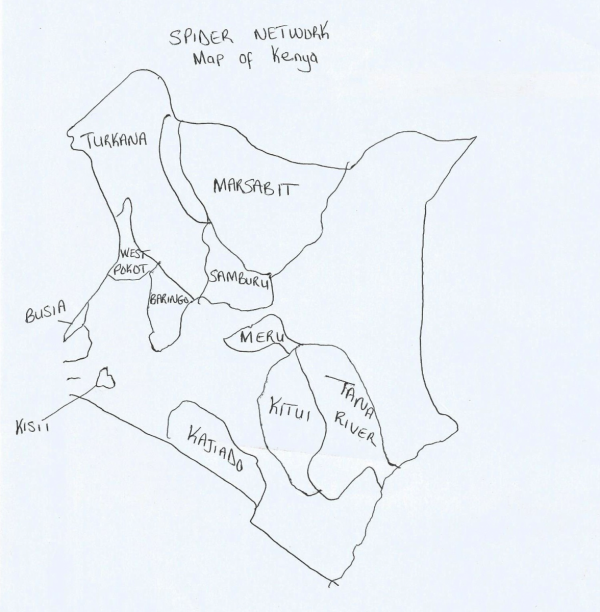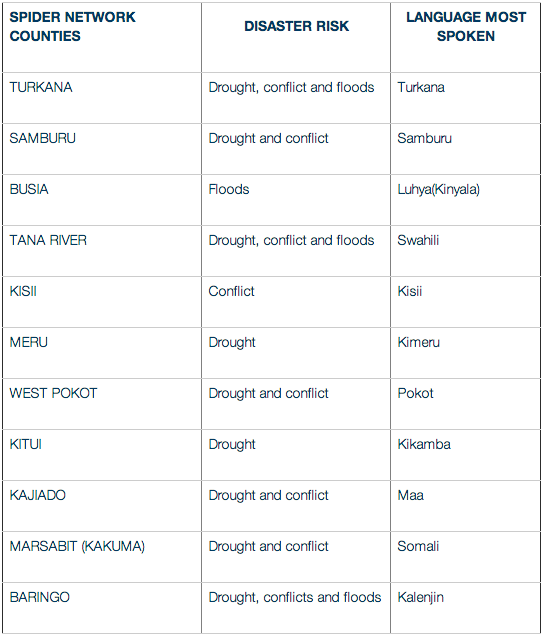Shaping the future: Our strategy for research and innovation in humanitarian response.

Shaping the future: Our strategy for research and innovation in humanitarian response.

The Word of Relief Spider Network brings to our attention the beauty of ethnic diversity! Did you know there are 42 indigenous languages spoken in Kenya? Many have heard of some of the tribes where those languages are spoken – Maasai, Kikuyu, Luo and Kalenjin to name just a few.
The Maasai are the tall slender guys you mostly see in movies or on adverts wearing red and blue blankets. The Maasai women wear beaded necklaces and bangles. They speak a language called Maa. In fact most foreigners think that every Kenyan is a Maasai.
On the other hand we have the Kalenjins, the pride of Kenya through their prowess in athletics. They are the best marathon runners in the world. It gets more interesting to learn that the Kalenjin have sub-tribes that also speak different dialects.
Kenya is also home to the Kikuyu, the largest tribe in Kenya. Kikuyus are known for their entreprenurerial skills and ambition in business. The Kenyan president is from this tribe. They speak a language called Kikuyu.
The list can go on and on about each tribe, their language, culture and what they are most known for. It is a beautiful patchwork that makes up all of Kenya.
Translators without Borders’ Words of Relief, aims at eliminating linguistic barriers that can impede vital response and relief efforts during and after a crisis; one piece of Words of Relief is the Spider Network of rapid response community translators who can translate from English/Swahili into Kenyan regional languages in key geographic areas prone to disaster.
During a disaster, communication with communities is very critical in improving relationships, mitigating conflict and in particular, materially improving service delivery. This can only be done effectively if the communication is in the language that the affected population understands.
It is for this reason that Words of Relief is building a Spider Network of Rapid Responders who can translate from English /Swahili into 11 Kenyan regional languages in key geographic areas prone to disaster. Kenya for instance, experiences a number of disasters in different regions. These disasters range from fire, drought, famine, floods, ethnic conflicts landslides and mudslides.
The month of July was spent developing the job criteria for the Spider Network and recruiting the Rapid Response translators. We have identified 11 regions in the country and picked out the languages that are commonly spoken in each of these regions, for example:


These rapid community translators will be located in these regions and they will be the people that will be corresponding with the aid workers on the ground to support translation of key crisis messages during a disaster.
They will also translate key crisis and disaster messages such as the Infoasaid Message Library, from English/Swahili into their native languages, so that we can disseminate it openly before a disaster occurs. This will enhance communication between the aid workers and the affected people.
We can’t wait to train our Rapid Response translators in the coming months at our Training and Translation Centre in Nairobi. The training package is being developed now with other organizations who either specialize in translation or in on-line humanitarian trainings. We have also established the criteria for recruiting the translators, which we will begin in August. Stay tuned!
July was also an important month for the CDAC-Network (Communicating with Disaster Affected Communities) and its members, including Translators without Borders, as the new CDAC-N resource website was launched. TWB’s Words of Relief work was highlighted in the story on the Infoasaid Message Library that has been translated by TWB into eight languages and will be made available online:http://www.cdacnetwork.org/i/20140722092313-2v4nb/ Take a look!

 Please upgrade your browser
Please upgrade your browser
You are seeing this because you are using a browser that is not supported. The Elrha website is built using modern technology and standards. We recommend upgrading your browser with one of the following to properly view our website:
Windows MacPlease note that this is not an exhaustive list of browsers. We also do not intend to recommend a particular manufacturer's browser over another's; only to suggest upgrading to a browser version that is compliant with current standards to give you the best and most secure browsing experience.